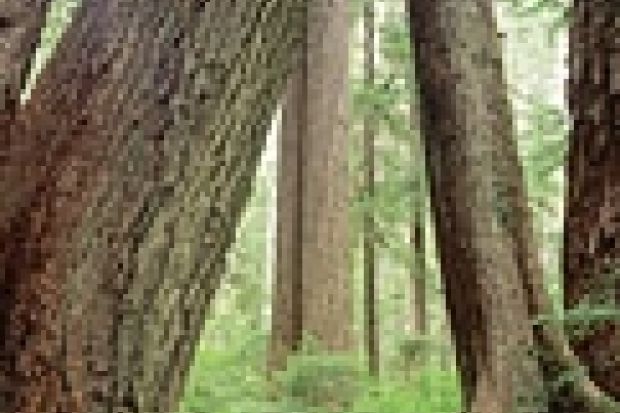Ecologist Jingyun Fang brought a new urgency to his studies when he learnt that his home town had suffered a damaging change in climate.
My home town is a small, poor village called Anqing, located at Anhui, China, along the Central Yangtze river. I remember my childhood winters were very cold and the ground was always covered with thick snow. Birds and hares found it hard to find food, and that made them easy to catch. Children lured birds into their homes with food and then snared them with dust pans. Men caught hares outdoors because they were easily found against the snow. I was very much part of this life until I finished my education at middle school and left Anqing for university. Unfortunately, when I returned to my home town about 20 years later, the landscape and lifestyle had gone as a result of rapid climate warming: no cold, no snow, no birds and no hares. That is such sorrow. It is also a strong motivation for me to work hard.
When I was a graduate student, my major interest was in terrestrial ecology, focusing on the relationships between the distribution of vegetation and climate. In 1989, after I got my PhD in Osaka, Japan, I moved to Beijing and was employed by the Chinese Academy of Science. At that time, the Chinese economy was badly damaged for political reasons and institutes were being reformed, switching from a tenure to a contract system. As a young researcher just back from overseas, I had considerable difficulty finding research funding. The United Nations summit on the environment and development, held in Brazil in 1992, helped me out of this predicament. Since then, climate change has been of great concern to both the general public and to policy-makers in many countries, including China. Soon, I was involved in a national research project on climate change and its impact on ecosystems, with my research focused on the emission of carbon dioxide from different forest ecosystems and the evaluation of the terrestrial carbon budget in China.
My two assistants and I worked hard from morning to midnight every day, driven in part by the shock of discovering how rapid warming had affected my home town. After about a year and a half, we successfully developed a method for estimating whole forest biomass - including wood, leaf, branch and root - from commercial timber inventory data and direct biomass measurement in the field. This work is critical to evaluating the carbon stock of the forest biomass and its role in the large scale carbon budget. We reported our results at the 15th International Botanical Conference held in 1993 in Yokohama, Japan, earning praise from participants from Russia, the United Kingdom and the United States. After that, we completed a preliminary assessment of China's terrestrial carbon budget, and reported this at a conference of the International GeoBiosphere Programme that took place in Beijing in 1995.
Unhappily, we had to break from our research for several years at this point because of a lack of financial support. But in 1999, after I moved to Peking University, we obtained government funding for a project studying dynamic terrestrial carbon. My students and I improved our previous work and established a 50-year time series data-set on forest carbon stocks, which may be the first, well-designed national, long-term carbon stocks data-set in the world. This allowed us to estimate accurately changes in forest carbon stocks and to find the real role of forest ecosystems in regional and global carbon cycles. On Christmas Day last year, we submitted our paper to the journal Science , and were soon informed that it had been accepted with no major revision.
We found that in the first three decades from 1949, Chinese forests released a lot of carbon into the atmosphere as a result of agricultural exploitation, but during the past 20 years they have functioned as a carbon sink, sequestering atmospheric carbon. The increasing carbon sequestration is primarily the result of forest expansion and regrowth.
I was surprised that the carbon absorption rate of Chinese forests is comparable to that of North America, although the policies of the two are very different in character and intent. In the US, land use decisions are largely private matters driven by socioeconomic trends, while in China, expansion and regrowth are government policies intended to enhance forests.
Why is our study important? Our results indicate that Chinese forest is a terrestrial carbon sink and this helps us understand how much and where the carbon has gone, a mystery that has long puzzled scientists. It also shows that the nationwide reforestation and afforestation programmes in China are a good example of how a country's environment can be improved through ecological engineering, while providing us with timber.
Another implication of our research is to help provide a rationale for sensible national and international policies regarding forests and the carbon dioxide cycle. Our results provide evidence to support the proposal addressed by the Kyoto Protocol that carbon sequestered by afforestation and reforestation could partly offset carbon dioxide emissions from fossil fuel consumption, even though the increased carbon uptake is viewed as a temporary reservoir.
The Kyoto Protocol does not require commitments from developing countries, but recent decreases in the rate of deforestation in China have already contributed to reducing global carbon dioxide emissions.
Jingyun Fang is a professor of ecology in the department of urban and environmental sciences, Peking University, and vice-president of the Ecological Society of China. His research was published in Science on June 22.
